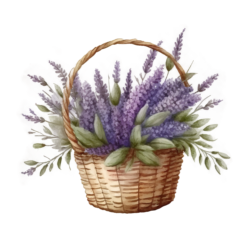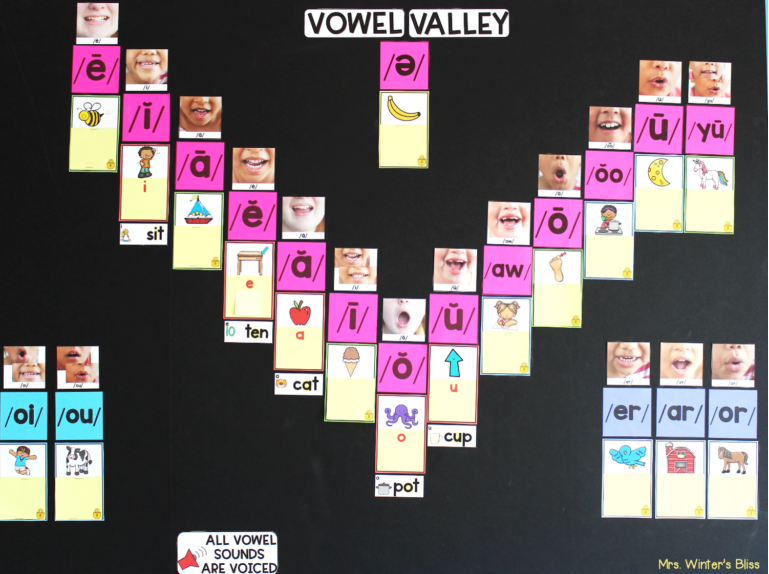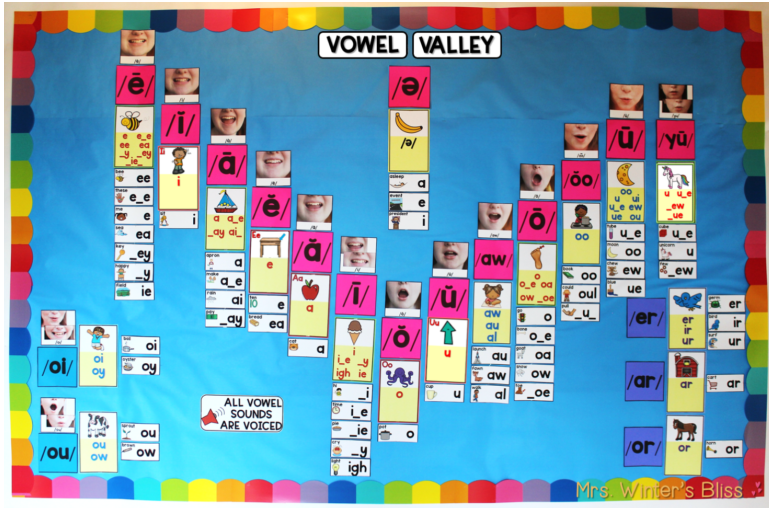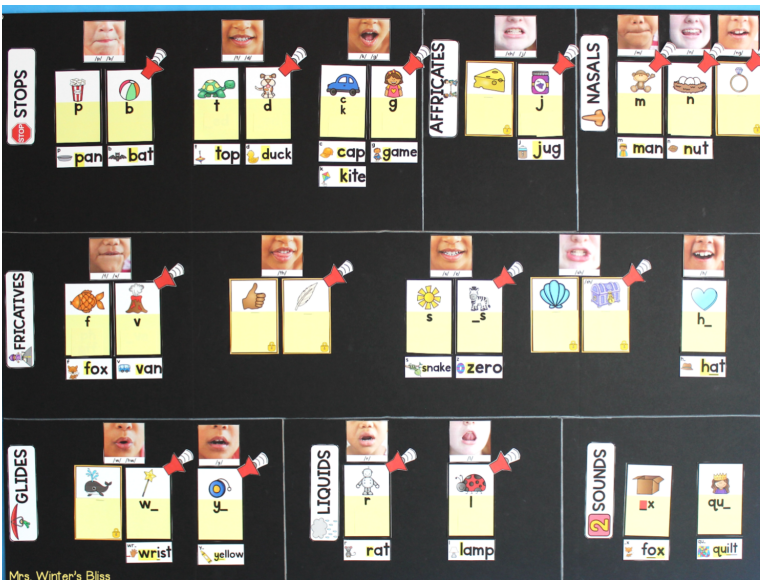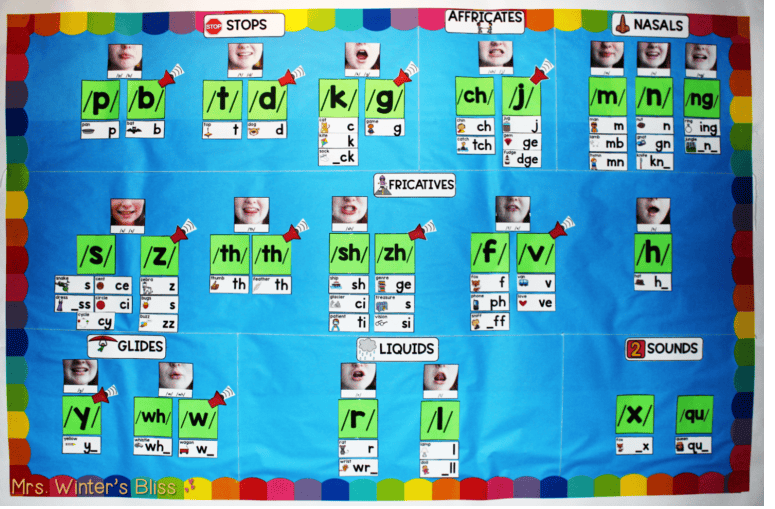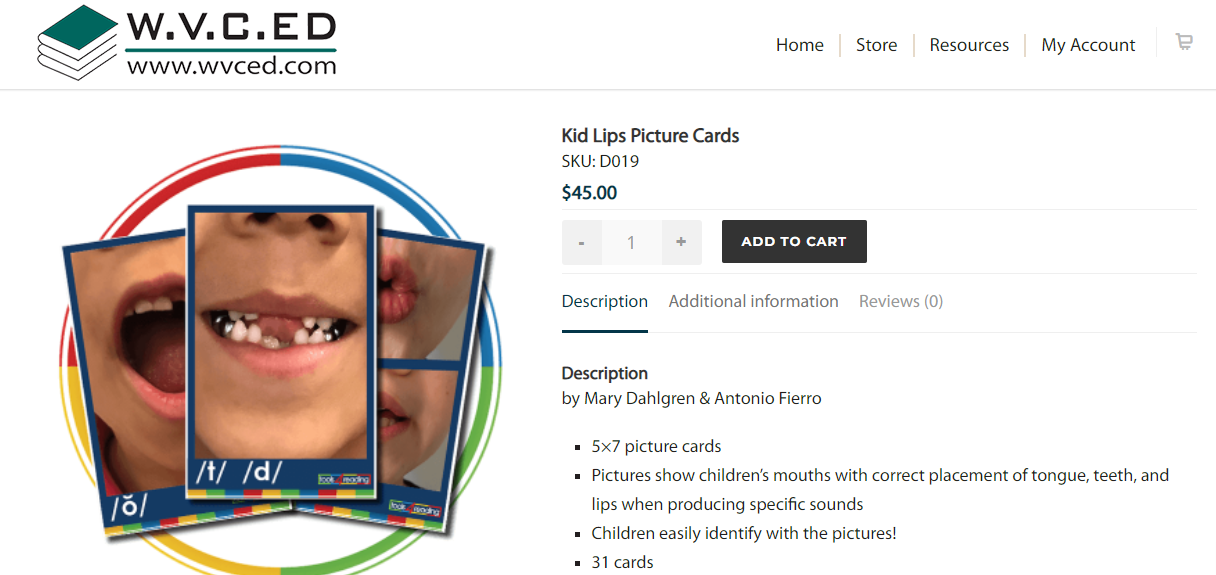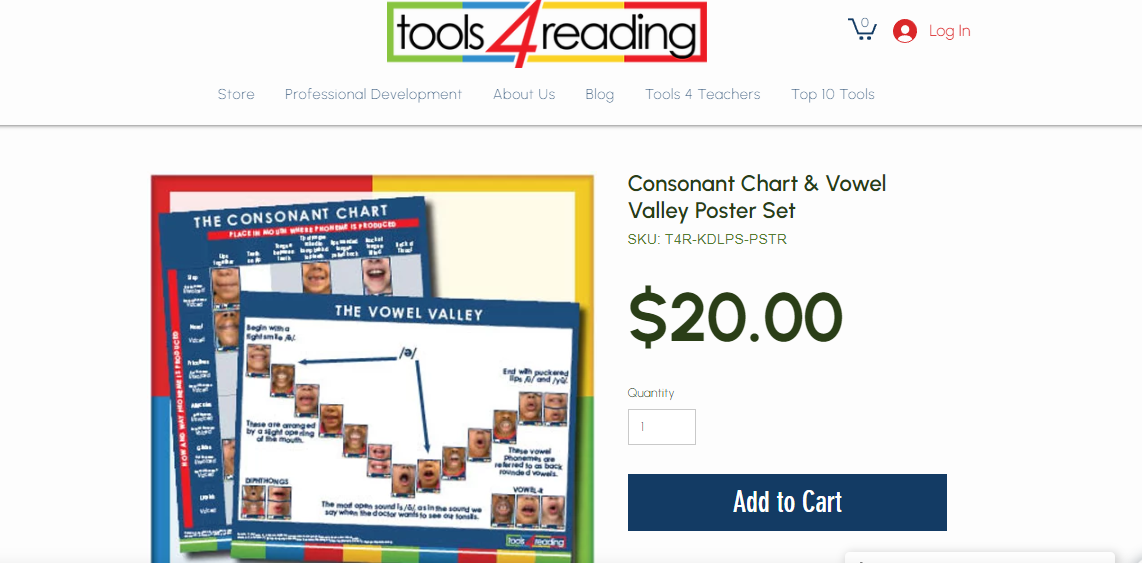A sound wall is a display or bulletin board that is built around phonology in which the different speech sounds, or phonemes, are organized. (Please also see my Word Walls page!)
- Vowels and consonants are separated on a sound wall.
- Each phoneme is represented by an articulatory photo and a list of words that clearly depict the various graphemes for that phoneme.
Build the sound wall as each phoneme is taught. Have mini sound walls for each reading group!
Check out – Listen, Practice, and Master all the Sounds!
To get started, read this page and watch these videos!
“Vowels carry the voice and tune of a word,” (Hill for Literacy, 2022). An idea from Moats (2000) is to create words using the same two consonants to demonstrate the changes in the vowel sounds. For example, use b/t:
- beet
- bit
- bait
- bet
- bat
- bite
- bottle
- but
- bought
- boat
- book
- boot
Check out these bulletin board examples which can be purchased from Mrs. Winter’s Bliss. The first is a basic version and the second is more advanced.

Consonant Place and Manner of Articulation
Stops: Created by restricting airflow and releasing a puff of air.
- p, b (lips)
- t,d (ridge/teeth)
- k, g (back of throat)
Fricatives: Made by forcing air through a narrowed air passage, causing mouth friction.
- f, v (teeth/lips)
- th – 2 sounds (tongue/teeth)
- s, z (ridge/teeth)
- sh,zh (roof mouth)
Affricates: Sound produced by the sequence of a stop followed by a fricative.
- ch (roof mouth)
- j (roof mouth)
Nasals: Mouth closed, forcing breath through nose.
- m (lips)
- n (tongue/teeth)
- ng (back of throat)
Liquids: Formed by interrupting the airflow but without friction.
- r (roof mouth)
- l (ridge/teeth)
Glides: Formed in similar ways as vowels.
- y (roof mouth)
- w (back of throat)
- h (glottis)
Consonants are voiced when vocal cords vibrate or unvoiced when they do not vibrate.
sound walls science of reading
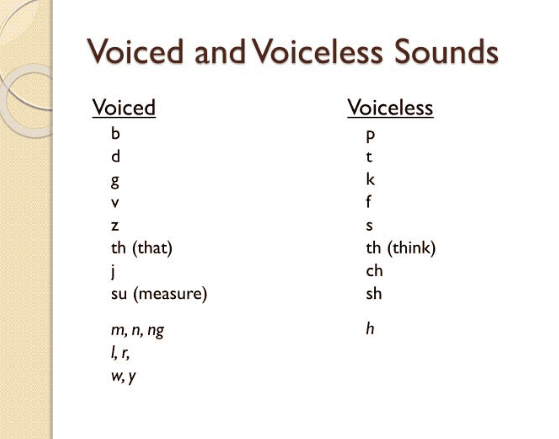
If you want to make your own bulletin board from scratch, here are cards of mouth formations for each phoneme. Again, children are encouraged to think about the location of articulation — what happens with their teeth, lips, and tongue when they make a sound – by using articulatory photographs. Mirrors are helpful!
Sound walls are INCREDIBLY helpful! Consider a standard word wall. The word ‘the’ would be placed under the letter ‘t.’ ‘The’ does not begin with the phoneme /t/, but with the unvoiced /th/. Similarly, the word ‘she’ begins with the phoneme /sh/ rather than the phoneme /s/. When we try to teach students to decode words based on phonemes, this causes confusion (Why Teachers Are Adopting Sound Walls Over Word Walls | Teach Starter).
04/23/2023
![]()
